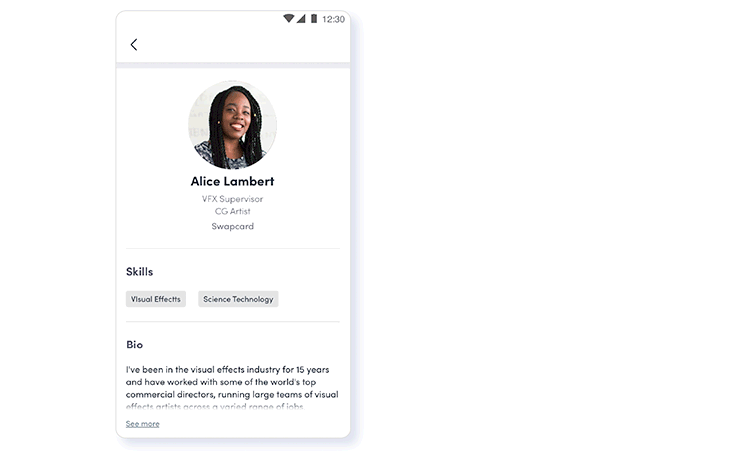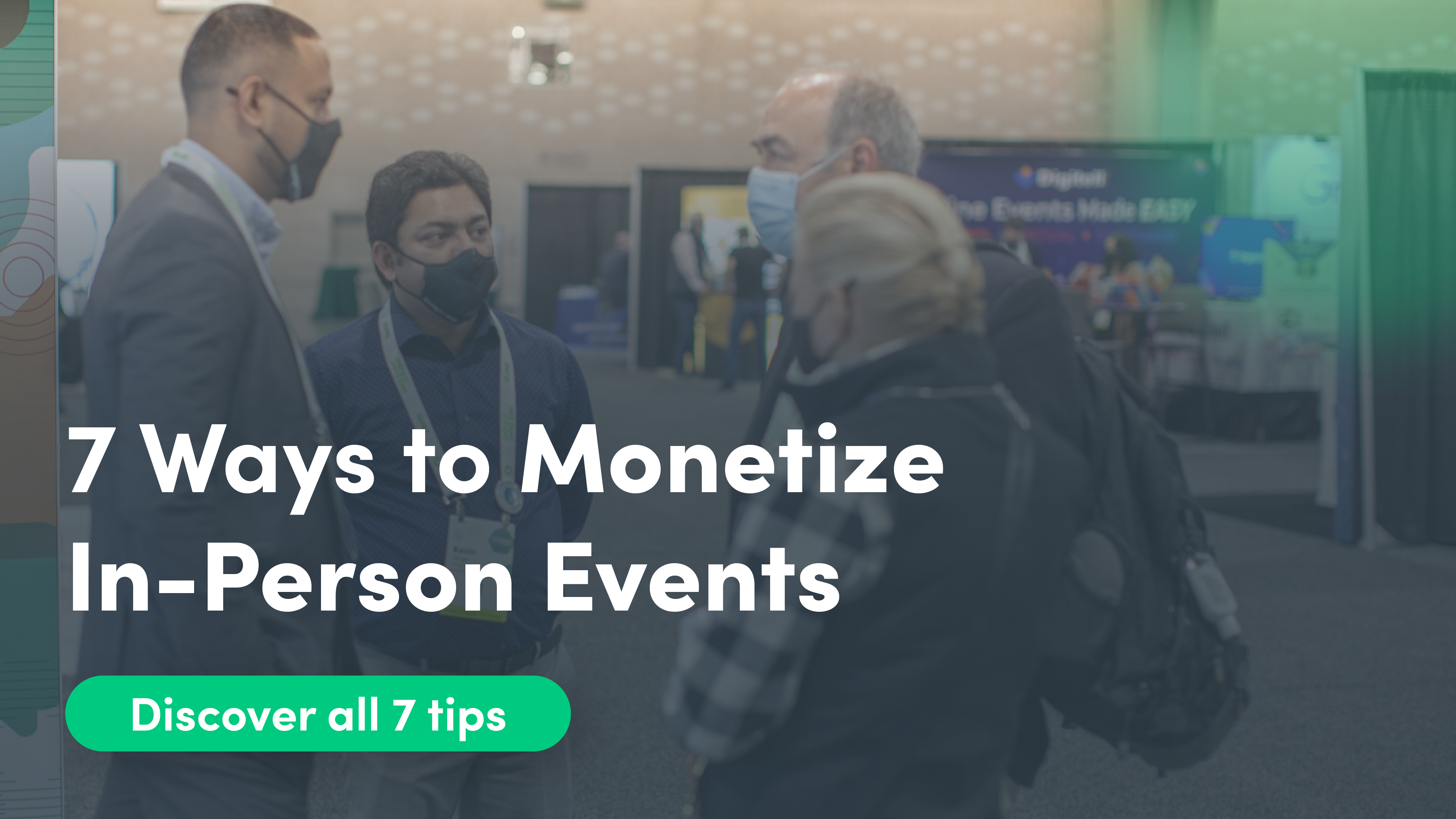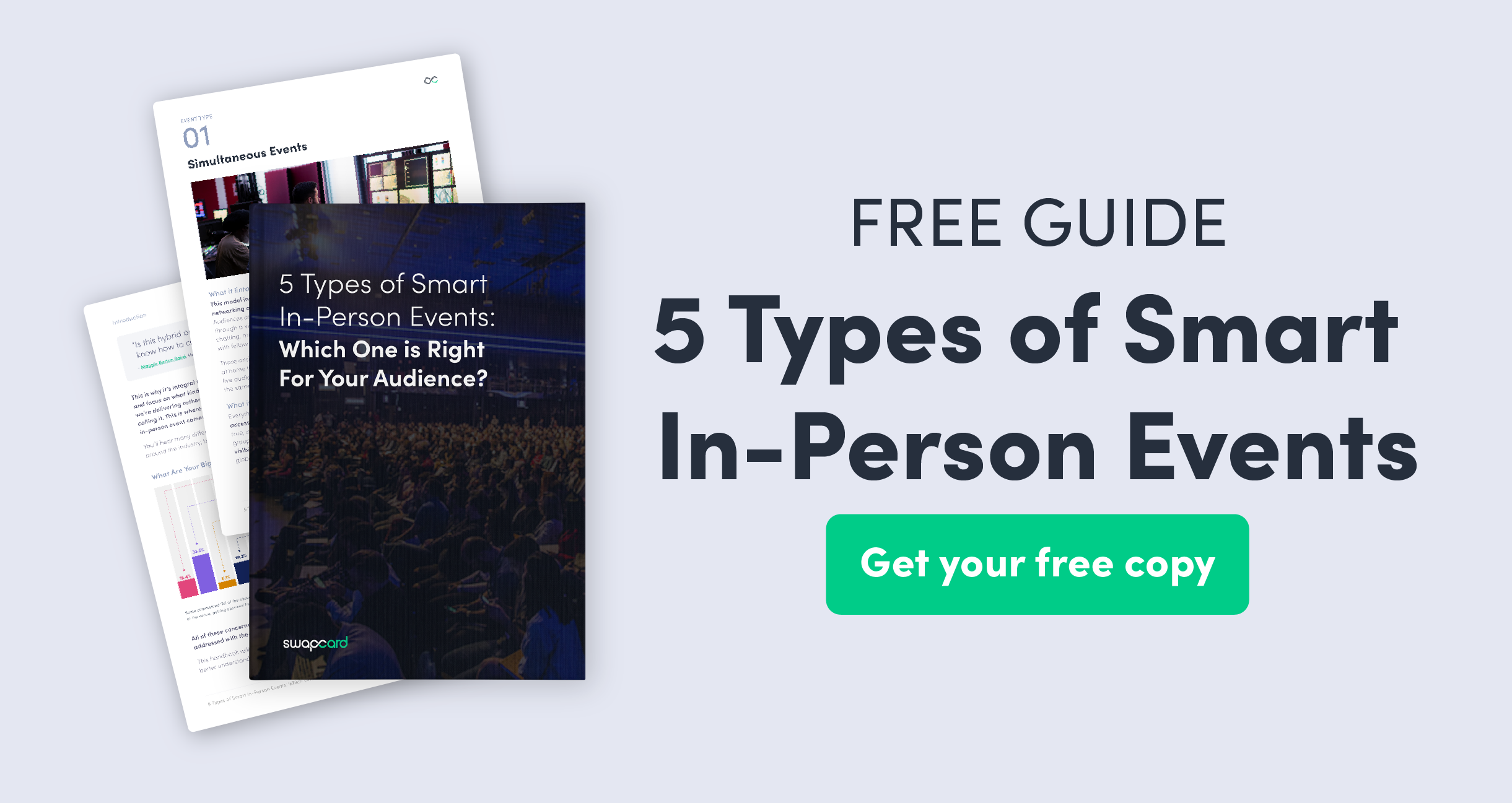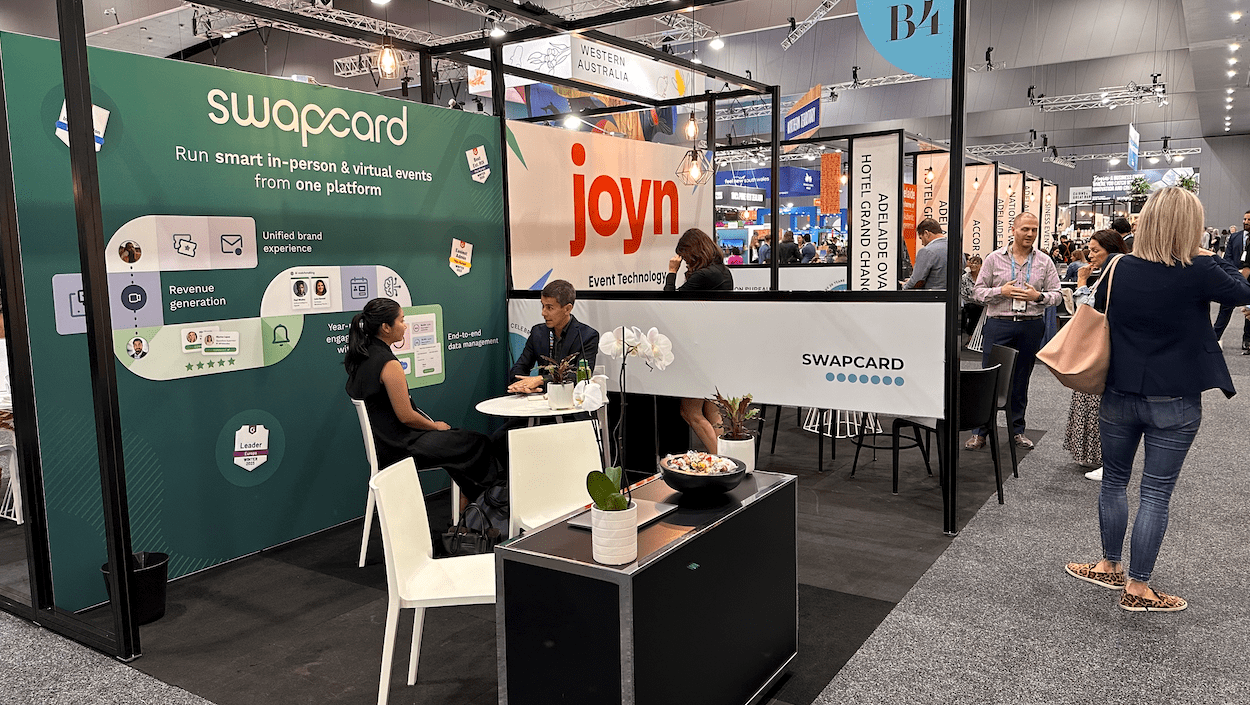A new business model for in-person events
The eagerness to return to in-person events after almost two years apart is palpable. 80% of event planners aim to produce their next in-person meeting in the first half of 2022.
There’s an excitement and buzz about in-person events returning, but it’s also becoming clear that audience expectations have changed since 2020, especially when it comes to trade shows, conferences, and hosted buyer programs. One of the biggest mistakes event planners could make in 2022 is defaulting back to the old business model, namely fully in-person events with no tech aspect.
Our industry should take this opportunity to gather learnings from the shift to virtual over the past two years and incorporate the lessons into their new model of hybrid events.
Virtual events deliver many benefits. Event planners should be aiming to include a virtual aspect into their in-person events in 2022 so that they can continue to reap the benefits that technology provides.
Some of the advantages event organizers saw when taking their events online during the pandemic include:
- They had more data at their fingertips because every online action has a digital footprint. Planners started to better track their audience’s actions, likes, and dislikes
- The shift from physical to virtual events resulted in a drastically reduced carbon footprint offset by the entire industry
- Eliminating travel saved everyone time and made event organizers, exhibitors, sponsors, and attendees all see the benefits of conducting business online
- Virtual events resulted in greater accessibility and representation of diverse participants
- Event planners, exhibitors, sponsors, and attendees alike who did business online discovered that there is more potential for increased return on investment (ROI).
The last point about increased ROI is one that many event organizers have been talking about as the return to in-person events is at the forefront of their minds.
So listen up, trade show directors, conference planners, and hosted buyer event organizers. This one’s for you! The best way to monetize your events is to ensure you deliver value for your sponsors, partners, and exhibitors.
Happy exhibitors lead to more exhibitors and that leads to more profit for event organizers. The more deals your exhibitors close at your event, the more likely they are to pay more for visibility and both online and onsite booths the following year.
Here are 7 ways to boost exhibitor ROI at your in-person events by harnessing technology and all the advantages of a digital-first experience. This will, in turn, lead to a successful, profitable return to in-person events for you, the event organizers.
Tip #1: Make online networking easy to see greater returns
One of the top objectives of most events is connecting the right people with each other. This is indeed the main goal of your exhibitors. Technology makes networking effortless for your audience.
There are three key timeframes to consider when designing networking opportunities at your events:
- Before the event

- During the event
Design diversified networking spaces, online and onsite, that will enhance your audience’s matchmaking opportunities. Some ideas you should consider having include: individual and group workshops with speakers, outbound/inbound meetings with peers, smart filters on your event platform based on job titles, industries, region, and more, a knowledge hub with smart filters based on topics of interest, or a group chat room. All of these ideas can work either in a virtual or physical environment and will benefit both audiences as well as your exhibitors.
- Post-event
Don’t let the energy or momentum stop after your event - keep going with online interactions for weeks or months. Give all of your participants the opportunity to reconnect or make up for lost networking opportunities during the event days. Lost opportunities include canceled meetings, no-shows, or rescheduled connections. Ensuring that you have a dedicated online space for attendees to connect once the event is over ensures that no networking opportunity is missed and keeps your community engaged for longer, leading to more positive interactions.
Tip #2: Sell tiered tickets for different audiences
It’s imperative your audience has a clear understanding of the benefits associated with attending your event in-person vs. virtually. This is the first significant step towards increasing your audience size, and a bigger audience means a bigger net for your exhibitors to fish from. Take the time to design different experience levels that cater to different audience needs.
For example, virtual audiences tend to be more interested in learning through the event content than networking. We know this based on industry data and our own client conversations at Swapcard. So you could have a freemium ticket for at-home attendees to only watch the content, either live or once the event is over. We know that attendees willing to pay and travel to attend the event in person are likely looking to close business deals, so structure their tickets and access around VIP networking opportunities. Your exhibitors will also be prepared to pay top price for access to such a qualified group of buyers. You can structure your sponsorship packages based on sales or commission, so that when their deals increase, so does your profit.
Tip #3: Drive booth traffic for your partners online and onsite
Keep partners and exhibitors busy and happy by driving attendees to exhibitor booths in the marketplace. The valuable thing about having virtual and onsite attendees is that with the right technology, you can have a digital marketplace as well as a physical show floor and drive both audiences to the relevant booths. This increases the reach of all exhibitors and leads to a wider net of potential customers.
Drive traffic to exhibitors’ booths by promoting the marketplace in event communications, via notifications, and via ads and banners both onsite and online.
Tip #4: Offer sponsored sessions for increased visibility
Content is king, especially in a virtual world. Whether it’s live, simulive, pre-recorded, or on-demand, attendees that come to learn will be spending most of their time consuming content and browsing the schedule. So make your exhibitors visible where those attendees are hanging out. Put them on the schedule with sponsored sessions.
Swapcard’s research in the Business of Virtual Events shows that sponsored content is the most important element of a partner’s ROI. You can sell sponsored sessions as options or upgrades to your partners. The only catch is that this content has to be educational and interesting. Don’t make space for sales pitches and demos in your schedule, because the data shows that attendees don’t warm up to those types of sessions. Instead, encourage your exhibitors to use their expert knowledge and deliver insightful, thought leadership-style sessions. That’s what will get your audience interested and drive them over to the speaker and sponsor profiles when they watch the session.
Another great, interactive content option that attendees enjoy is workshops or roundtables. These will place sponsors directly in front of the audience they are vying for and give attendees the chance to participate and ask questions in real-time. Allowing sponsors to speak in-person or virtually is also an interesting and flexible way to expand a sponsor’s reach and visibility.
Tip #5: Use data and reporting to your advantage
The right technology will give your exhibitors and partners unprecedented access to real-time data. Platforms like Swapcard give exhibitors a robust and customizable exhibitor portal. This portal gives them the tools to manage and follow their entire team’s activities and progress in real-time. If you’re wondering why data is important for exhibitors, it’s because they can justify the spending at your event to the decision-makers in their organization and get a bigger budget for the next event, which is, of course, good news for any event planner!
Be helpful and share key reporting indicators that your exhibitors should look for in order to maximize your prospects. These include: virtual booth visits, in-person lead vs. virtual leads, meeting notes, gamification results, and inbound lead boards.
Here’s an example:
Tip #6: Generate brand activation with ads
A sponsored networking lounge is the most common experiential marketing strategy to create an immersive and vibrant in-person experience. That’s in addition to the traditional banners, strategically placed logos, and other marketing materials that draw eyes to your brand during an event.
Even though onsite advertising is highly successful, the past two years of virtual events have proven that online advertising shows greater results and is here to stay.
Online advertising will allow sponsors to get more exposure before, during, and after an event. Sell brand activations such as logos on invitations and reminder emails, sponsored push notifications, logos and banners in all sections of the event platform, and sponsored games or challenges in the online games section of your platform.
A virtual booth is a standard for brand activation because of key features such as promo videos, custom backgrounds, video and product galleries, ads, live chat options, instant video call options, an integrated meeting scheduler, booth visitor tracking, and more. All of these booth activations contribute to an immersive experience that will draw people to your exhibitor’s brand and keep them coming back, leading to a boost in sales for them and greater profit for you.
Tip #7: Maintain momentum with a 365-day community
Turning an event audience into an engaged community by offering a year-round experience to members is becoming an attractive new revenue stream strategy for event professionals and sponsors alike.
An engaged community without borders is where business thrives all year round, without the pressure of running many meetings in a couple of days. Research from Swapcard’s Community Report explains how communities are perfect places for partners to get year-round visibility, sponsor content, interact with prospects, and garner trust and credibility. They’ll be willing to pay top dollar for community access because they’ll have all year to make more profit than ever before.
Organizers have the ability to implement and automate a subscription model for partners with a monthly or yearly fee for access to a global group of prospects all year long - a monetization opportunity that didn’t exist before.
Remember: When building your monetization strategy for going back to in-person events in 2022, ensure that all the monetization features used at an event are also available on your online 365-community platform.
 Best-in-class organizers have been able to generate margins and deliver high ROI to their sponsors when they understand how best to appeal to each different audience, get creative with sponsored sessions, customize networking experiences, boost sponsor visibility with an online marketplace, strategically execute ad campaigns, use data and analytics to their advantage, and invest in building a community.
Best-in-class organizers have been able to generate margins and deliver high ROI to their sponsors when they understand how best to appeal to each different audience, get creative with sponsored sessions, customize networking experiences, boost sponsor visibility with an online marketplace, strategically execute ad campaigns, use data and analytics to their advantage, and invest in building a community.
Don’t go back to the same old in-person events model we were used to in pre-pandemic times. Harness the power of technology and all its advantages to boost exhibitor visibility and profits at your events going forward, and you’ll be boosting your own ROI as an organizer.











